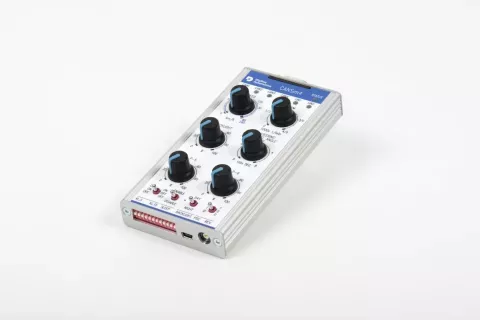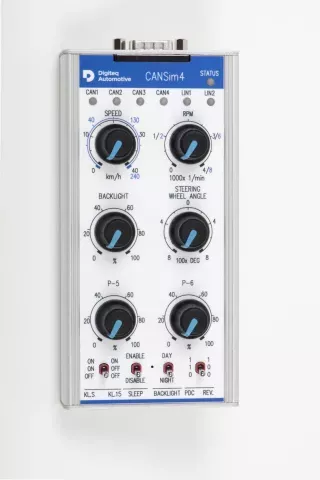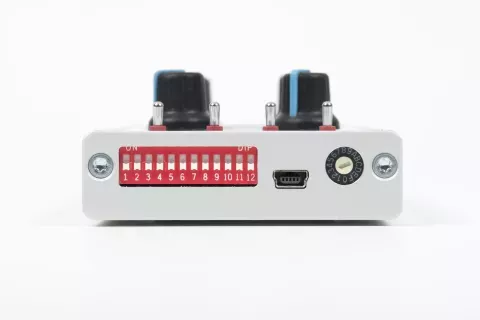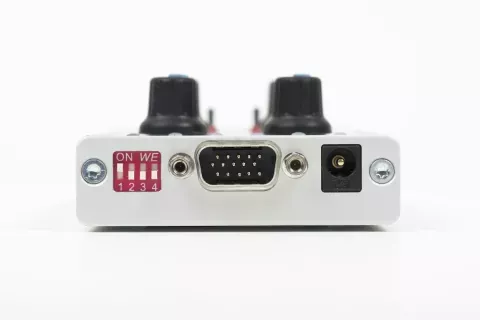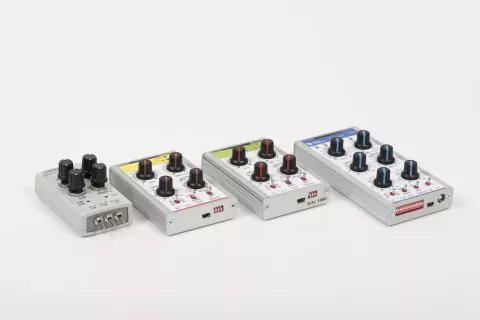CANSim4
CANSim4
SimulatorsCANSim4 is the successor to CANSim3, a widely used rest-bus CAN simulator, which simulates the features of an entire car for the unit being tested.
CANSim4 is capable of simulating several different units of the VW concern at the same time. It has been developed according to the needs of our main customer – Škoda Auto a.s. The primary purpose of the device is to stimulate radios (MIB / ICAS3 units), but it can now be used for other units and purposes as well. The most common use of CANSim4 is in the testing area, but it can be also used in miscellaneous demonstrators.
The main advantages of CANSim4 are its small size, simple operation, comprehensive functionality and affordable price.
CANSim4 allows the user to control basic simulation signals with manual control elements, which eliminates the need for computer use. Such signals include, for example: speed, dimming level, and the position of the switch box. The current 4th generation supports the MQB, MQB37W and electrical MEB platforms.
Simulation Signals
The simulated signals are set in the default version as is described below. The user is able to change the function of the potentiometers and switches, as they are user programmable.
- Speed (0 – 240 km/h)
- RPM (0 – 8000 rpm)
- Backlight (0 – 100 %)
- Steering wheel angle (± 800°)
- CNG, water temperature, clutch
- Outside temperature, accelerator
- State of charge (0–100 %) on i.ID for MEB
- Open/close bonnet
- KL.S / KL.15
- Sleep
- Backlight (day and night modes)
- PDC & reverse
Key Features
- 4x CAN interfaces (2 are CAN FD compatible)
- 2x LIN interfaces
- 2x HS switches (e.g. KL.15 and KL.S simulation)
- 1x LS switch
- BAP simulation
- RTC
- User programmable items - 6x potentiometers and 4x switches
- User defined Rest-bus simulation
- 12x configuration DIP switches
- LED indication of CAN and LIN communication for all ports
- Network management NM high
- Up to 16 different modes
- Mini USB interface for firmware update and remote control
- Possibility of customised firmware modification
- Remote control over API
- CANSim Studio (own application for configuration of matrix .dbc)
Operating Modes
- 10 operating modes covering most applications
- Modes for MQB, MQB37W and MEB platforms
- Special modes for Infotainment test benches
- Special mode for demonstration purposes
- Special mode for the MEB test bench (an IgnSwExtV1 module is required)
- Mode which generates a “No Crash” PWM signal (covering frequencies of 10 Hz and 100 Hz)
CANSim Studio
CANSim Studio is a desktop application which supports the CANSim4 device. It allows for the creation of user-defined simulations from a .dbc matrix.
Signals can be set to static or dynamic values and assigned to CANSim4 control elements.
CANSim Studio also allows updating firmware automatically from the update server.
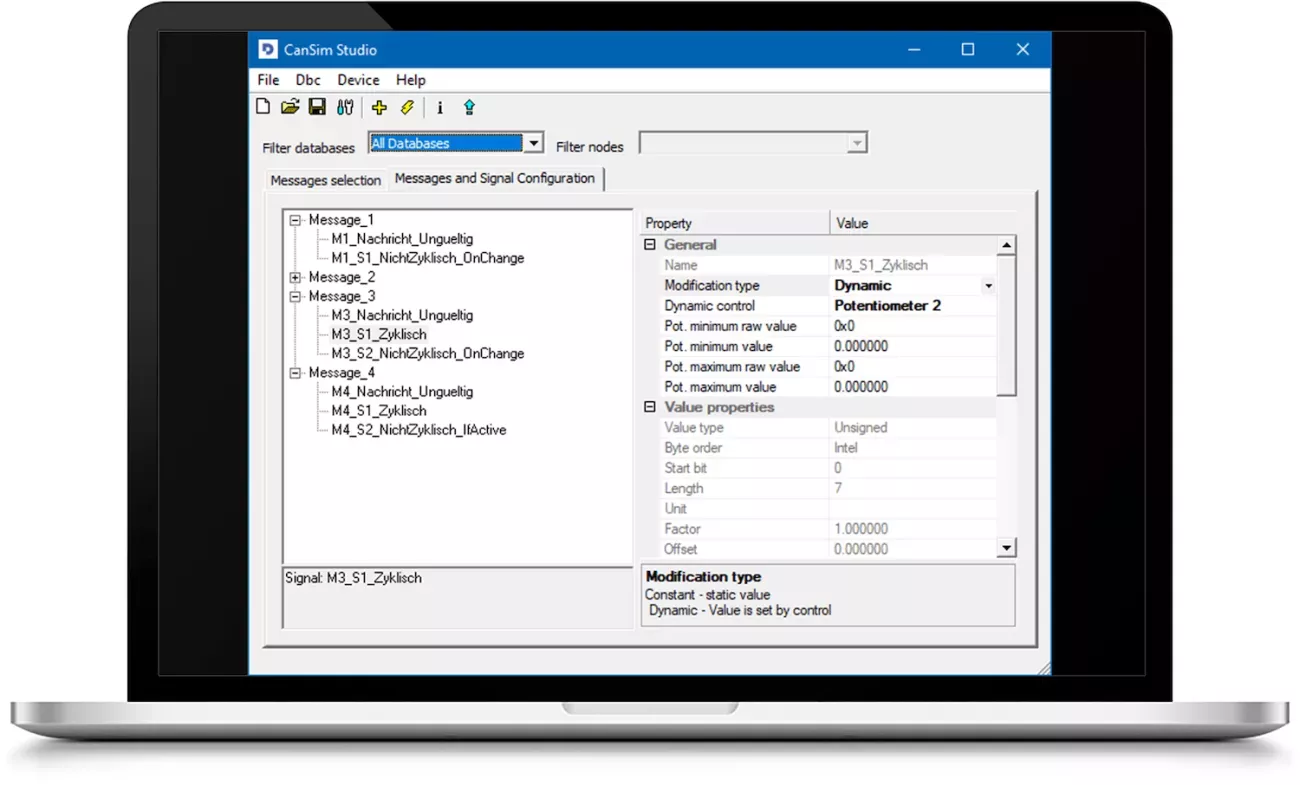
Accessories
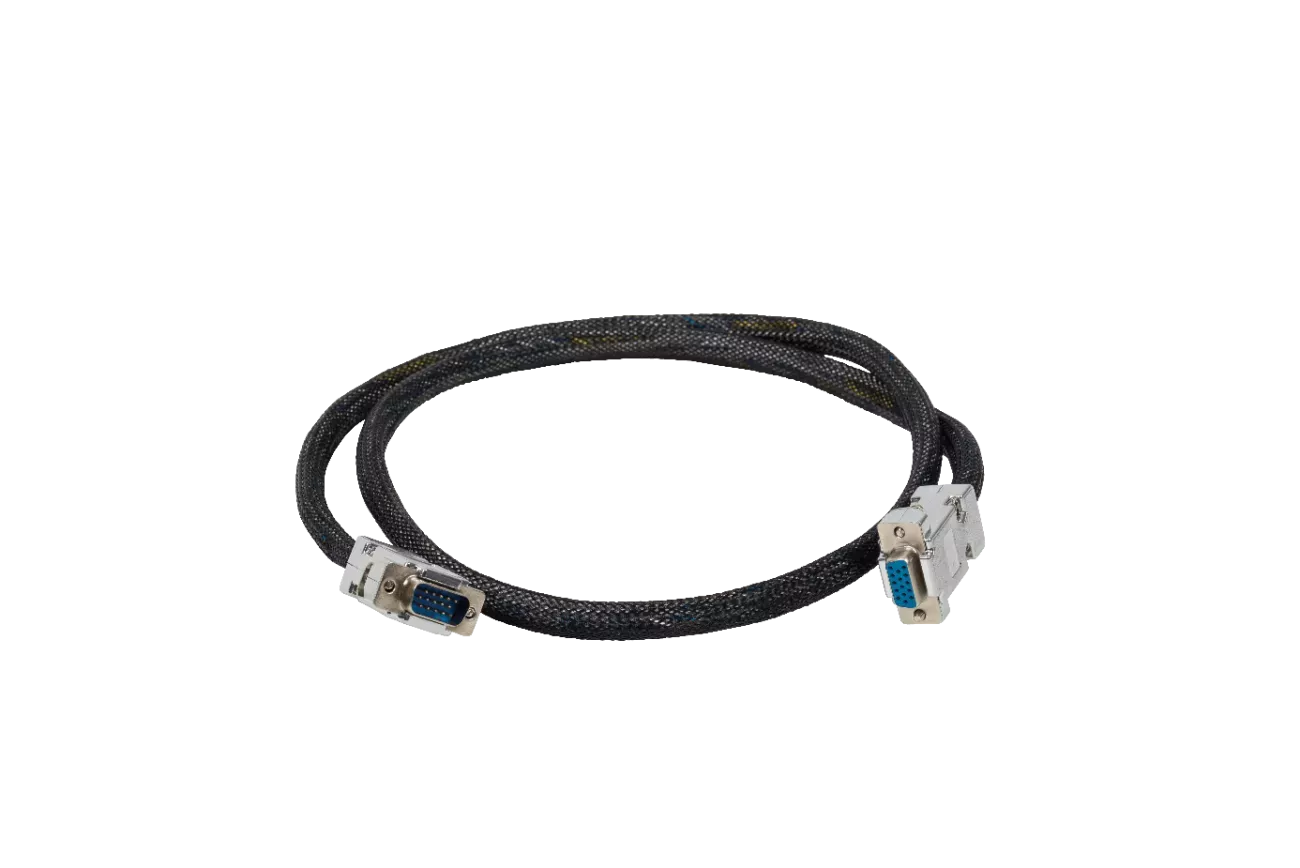
This cable harness connects all contacts from the main CANON 15 (female) connector with the same connector (male).
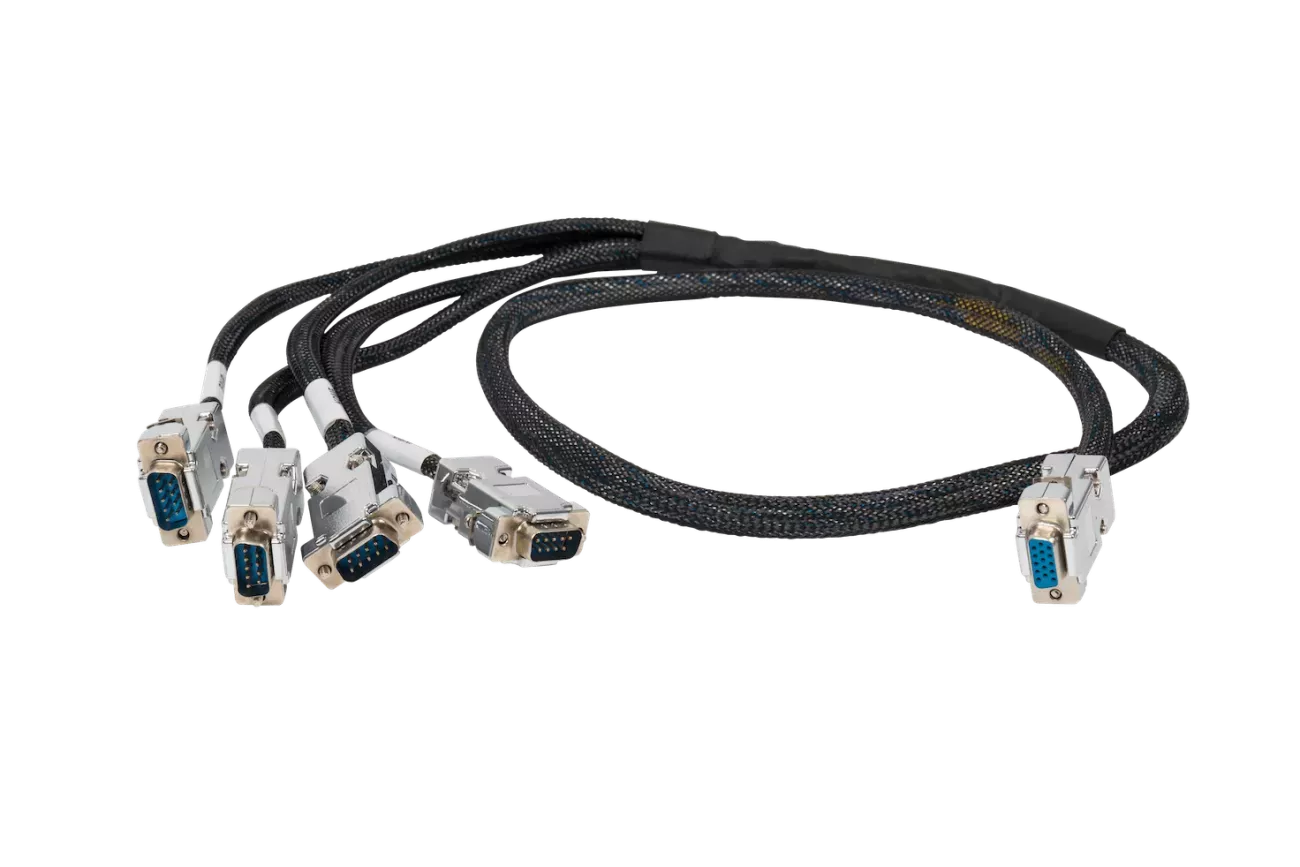
This cable harness has all CANs from the CANON 15 (female) main connector divided into separate CANON 9 (male) connectors.
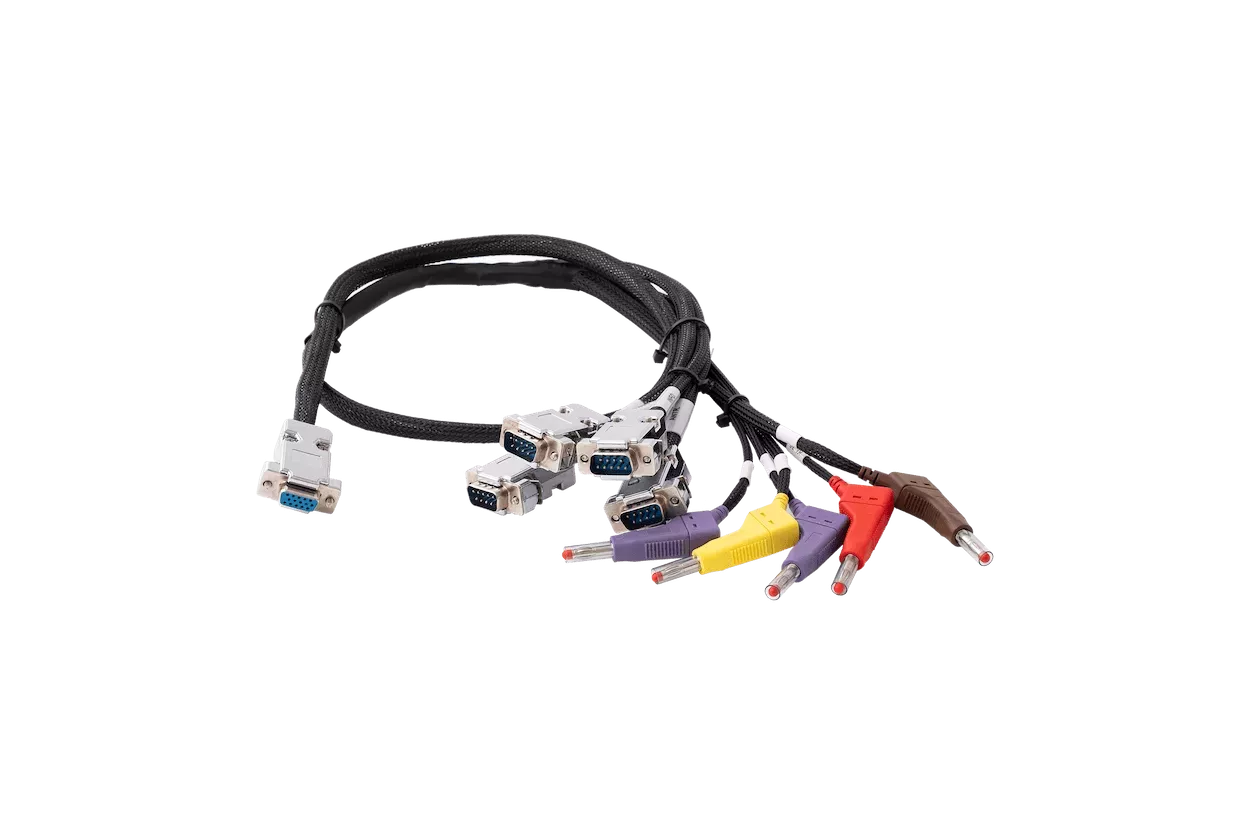
This cable harness has all CANs, a power supply (KL.30, KL.31), LIN buses and PWM output from the main CANON 15 (female) connector. These are divided and connected to separate CANON 9 (male) connectors and banana connectors.

Additional equipment for the MQB37W and MEB tets benches ensures the correct functioning of the KL.15 (and KL.S for the former one) pin.
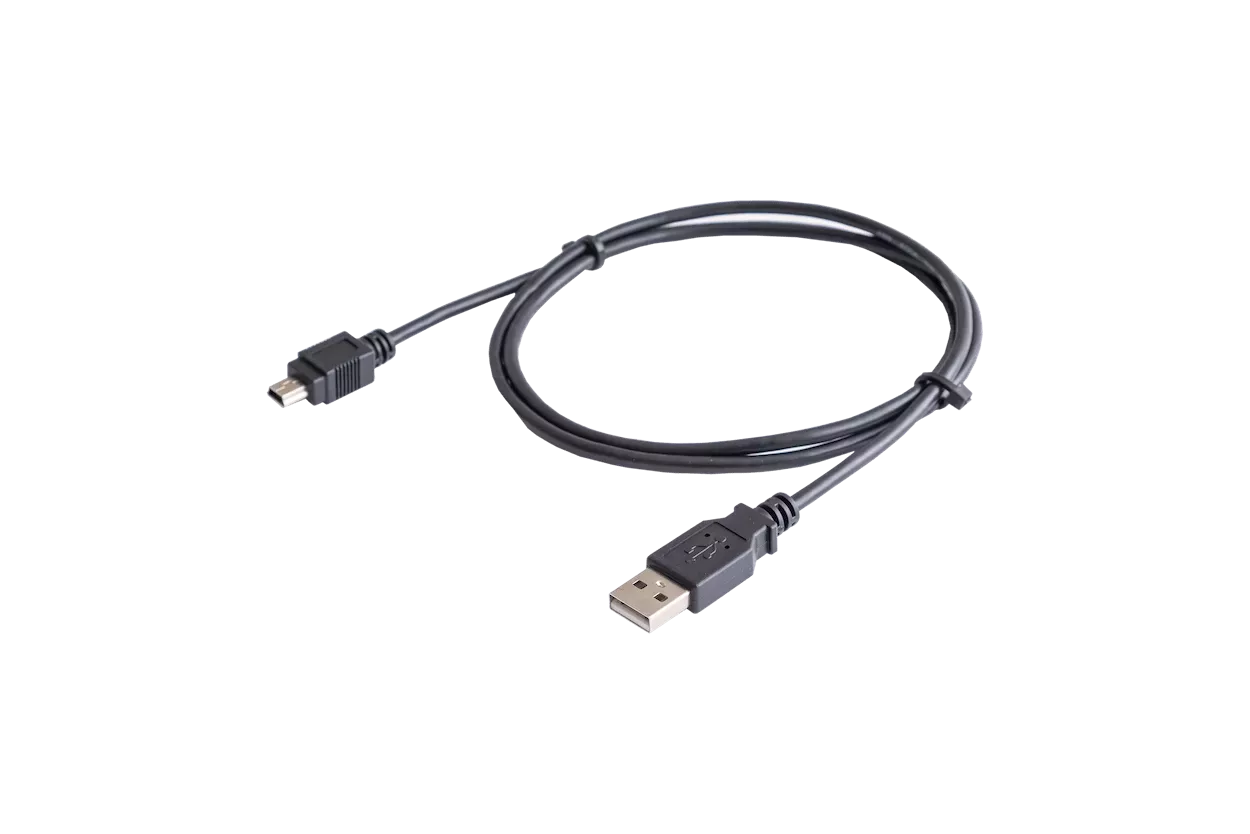
The USB 2.0 mini cable is used to connect the CANSim and a computer (e.g. for a FW upgrade).
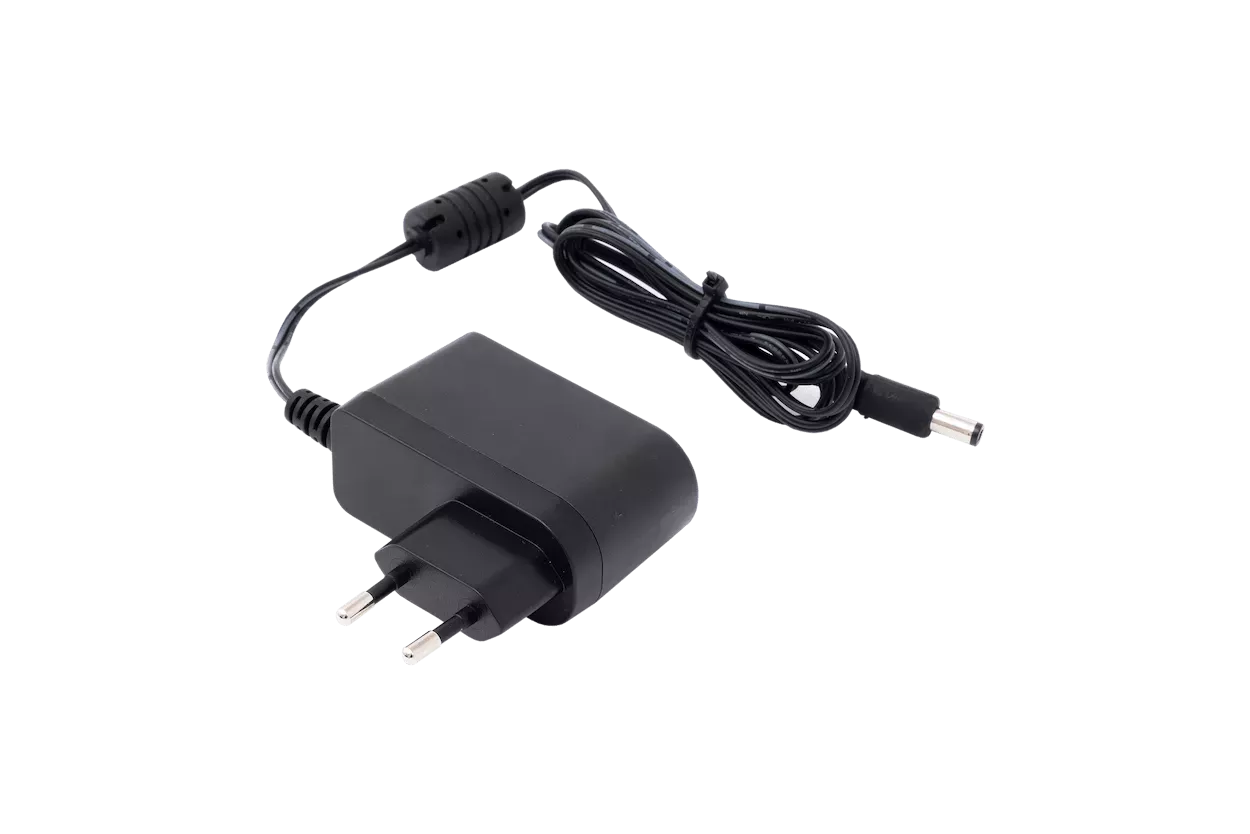
- Power adapter for power supply.
- Cable with banana connectors (on request) can be used for 12 V supply (for example, from a laboratory supply).
Technical Parameters
| Supported platforms | MQB, MQB37W, MEB |
| CAN physical layer | In accordance with ISO 11898 |
| Built-in CAN terminators | 120 Ω, switched by DIP switches on the rear panel |
| Max. output load of KL.15 and KL.S | 700 mA |
| Power supply | 8 V to 18 V |
| Operating temperature | -20 °C to 70 °C while preventing condensation |
| Dimensions (W x D x H) | 72 x 148 x 35 mm (including connectors and control elements) |
| Weight | 220 g |
The device complies with the VW80000 (2017-10) requirement for functional state A (all parameters OK) in operating mode II.c (maximum permissible load).
Documentation
On request, we offer individual training and professional consultation with this product. For more information, please contact us.
